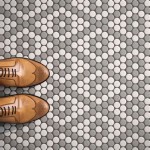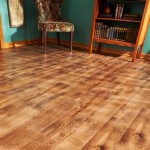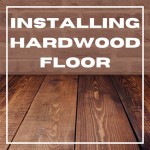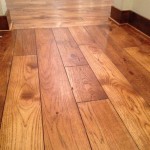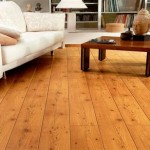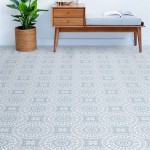Vinyl plank flooring is a type of flooring that is made up of thin, rigid planks of vinyl that are attached to a subfloor and then covered with a protective layer. It is an increasingly popular choice for both residential and commercial properties due to its durability and low-maintenance requirements. It is also much more affordable than traditional wood flooring, making it an attractive option for budget-conscious homeowners.
Types of Vinyl Plank Flooring
There are two main types of vinyl plank flooring: Luxury Vinyl Plank (LVP) and Rigid Core Vinyl Plank (RCVP). LVP is a thicker, more rigid product that is usually laid in a floating installation. RCVP is a thinner and more flexible product that is usually glued down.
LVP is typically more expensive than RCVP, but it is also more durable and easier to install. It is available in a wide range of styles and colors, making it a great option for those looking to match their existing décor. RCVP is usually less expensive than LVP, but it is not as durable or as easy to install.
Advantages of Vinyl Plank Flooring
Vinyl plank flooring has many advantages over traditional wood flooring. It is much more affordable and easier to install. It is also highly durable and resistant to scratches, dents, and water damage. Additionally, it is easy to clean and maintain, and it does not require refinishing like wood flooring does.
Disadvantages of Vinyl Plank Flooring
Vinyl plank flooring does have some drawbacks. It can be susceptible to cracking and warping over time, and it is not as aesthetically pleasing as wood flooring. Additionally, it can be difficult to repair if it is damaged, and it can be difficult to replace if it is worn out.
Installation of Vinyl Plank Flooring
Vinyl plank flooring can be installed over a variety of subfloors, including plywood, concrete, and existing vinyl. It is important to make sure the subfloor is clean, level, and dry before installation. Depending on the type of vinyl plank flooring you choose, you may need to use a glue or adhesive to secure the planks to the subfloor.
Cleaning and Maintenance Tips
Vinyl plank flooring is easy to clean and maintain. Vacuum or sweep the floors regularly to remove dirt and debris. Use a damp mop and a mild cleaning solution to remove stubborn stains. For deeper cleaning, use a scrub brush to remove dirt and grime. Avoid using harsh chemicals or abrasive cleaners, as these can damage the surface of the vinyl planks.
Conclusion
Vinyl plank flooring is an increasingly popular choice for both residential and commercial properties due to its affordability, durability, and low-maintenance requirements. It is available in a variety of styles and colors, making it a great option for those looking to match their existing décor. However, it is important to remember that it can be susceptible to cracking and warping over time, and it is not as aesthetically pleasing as wood flooring.








:max_bytes(150000):strip_icc()/LumberliquidatorsCoreluxeDeweyMeadowOakEvp-966e281976dc455e8e8dae0bf99ce66a.jpg)


![Vinyl Flooring Trends 4+ Hot Vinyl Flooring Ideas [2018] Inda Homes Luxury vinyl plank](https://i.pinimg.com/originals/fe/ab/52/feab52c0f83dc1efa9f5d15a4f83668a.jpg)



Related Posts

